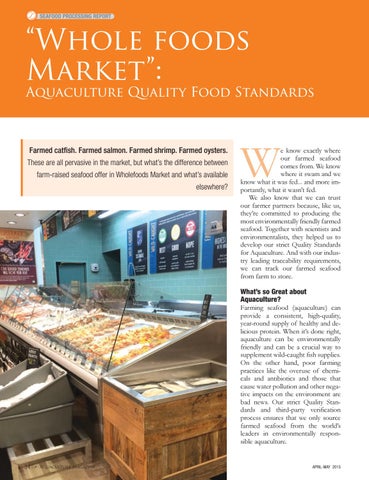SEAFOOD PROCESSING REPORT
“Whole foods Market”:
Aquaculture Quality Food Standards
Farmed catfish. Farmed salmon. Farmed shrimp. Farmed oysters. These are all pervasive in the market, but what’s the difference between farm-raised seafood offer in Wholefoods Market and what’s available elsewhere?
W
e know exactly where our farmed seafood comes from. We know where it swam and we know what it was fed... and more importantly, what it wasn’t fed. We also know that we can trust our farmer partners because, like us, they’re committed to producing the most environmentally friendly farmed seafood. Together with scientists and environmentalists, they helped us to develop our strict Quality Standards for Aquaculture. And with our industry leading traceability requirements, we can track our farmed seafood from farm to store.
What’s so Great about Aquaculture? Farming seafood (aquaculture) can provide a consistent, high-quality, year-round supply of healthy and delicious protein. When it’s done right, aquaculture can be environmentally friendly and can be a crucial way to supplement wild-caught fish supplies. On the other hand, poor farming practices like the overuse of chemicals and antibiotics and those that cause water pollution and other negative impacts on the environment are bad news. Our strict Quality Standards and third-party verification process ensures that we only source farmed seafood from the world’s leaders in environmentally responsible aquaculture. 34 »
